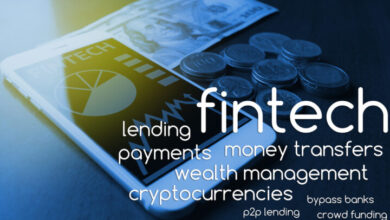Klarna Card Shakes Up US Payments

Move over, plastic
fantastic. The era of opaque interest rates, surprise fees, and the
ever-present threat of late payment penalties might be nearing its end. At
least, that’s the promise Klarna is making with its US debut of the Klarna
Card, a new financial instrument
aiming to be the smarter, smoother way to shop and pay.
Klarna, the Swedish
buy-now-pay-later (BNPL) giant, has already carved a niche for itself in the
payments industry. Their model lets consumers split purchases into
installments, typically interest-free, offering a more controlled alternative
to traditional credit cards. Now, with the Klarna Card, they’re taking things a
step further. This physical and virtual Visa card integrates seamlessly with
the Klarna app, allowing users to not only manage payments but also shop for
the best deals and track spending in one centralized location.
But what truly sets the
Klarna Card apart is its commitment to transparency. No more buried fees
lurking in the fine print – Klarna boasts zero annual fees, no monthly fees,
and even waives foreign transaction fees for international purchases. This
focus on upfront clarity is a welcome change in an industry notorious for its
hidden costs.
The traditional credit
card model has long been criticized for its tendency to encourage impulsive
spending and rack up debt.
Klarna counters this by promoting responsible
financial behavior. The Klarna Card operates on a debit system, meaning users
can only spend what they have available. Additionally, it offers a variety of
flexible payment options, empowering users to choose how they want to manage
their purchases. They can opt to pay their statement in full each month to
avoid interest charges, make early payments to chip away at larger purchases,
or split eligible transactions into 3 or 6 installments with interest. This
level of control allows users to tailor their repayment strategy to their
unique financial situation.
This focus on
responsible spending is underscored by Klarna’s data.
They report that a
significantly lower percentage of their BNPL users incur late fees compared to
traditional credit card users. This suggests that the Klarna model, with its
emphasis on transparency and control, might be nudging users towards healthier
financial habits.
Of course, the Klarna
Card isn’t a magic bullet. Approval requires meeting eligibility criteria,
including a credit check. For those who qualify, however, the Klarna Card
presents a compelling alternative. It offers the convenience and security of a
traditional credit card, with the added benefits of transparency, flexibility,
and the potential for rewards through the Klarna app.
The Klarna Card’s
arrival in the US throws down a gauntlet to established credit card companies.
Consumers are increasingly demanding more from their financial tools, and
Klarna is stepping up to deliver. Whether this new entrant will disrupt the
status quo remains to be seen, but one thing is certain: the Klarna Card
injects a dose of competition into the payments industry, which can only
benefit consumers seeking smarter ways to manage their money.
Move over, plastic
fantastic. The era of opaque interest rates, surprise fees, and the
ever-present threat of late payment penalties might be nearing its end. At
least, that’s the promise Klarna is making with its US debut of the Klarna
Card, a new financial instrument
aiming to be the smarter, smoother way to shop and pay.
Klarna, the Swedish
buy-now-pay-later (BNPL) giant, has already carved a niche for itself in the
payments industry. Their model lets consumers split purchases into
installments, typically interest-free, offering a more controlled alternative
to traditional credit cards. Now, with the Klarna Card, they’re taking things a
step further. This physical and virtual Visa card integrates seamlessly with
the Klarna app, allowing users to not only manage payments but also shop for
the best deals and track spending in one centralized location.
But what truly sets the
Klarna Card apart is its commitment to transparency. No more buried fees
lurking in the fine print – Klarna boasts zero annual fees, no monthly fees,
and even waives foreign transaction fees for international purchases. This
focus on upfront clarity is a welcome change in an industry notorious for its
hidden costs.
The traditional credit
card model has long been criticized for its tendency to encourage impulsive
spending and rack up debt.
Klarna counters this by promoting responsible
financial behavior. The Klarna Card operates on a debit system, meaning users
can only spend what they have available. Additionally, it offers a variety of
flexible payment options, empowering users to choose how they want to manage
their purchases. They can opt to pay their statement in full each month to
avoid interest charges, make early payments to chip away at larger purchases,
or split eligible transactions into 3 or 6 installments with interest. This
level of control allows users to tailor their repayment strategy to their
unique financial situation.
This focus on
responsible spending is underscored by Klarna’s data.
They report that a
significantly lower percentage of their BNPL users incur late fees compared to
traditional credit card users. This suggests that the Klarna model, with its
emphasis on transparency and control, might be nudging users towards healthier
financial habits.
Of course, the Klarna
Card isn’t a magic bullet. Approval requires meeting eligibility criteria,
including a credit check. For those who qualify, however, the Klarna Card
presents a compelling alternative. It offers the convenience and security of a
traditional credit card, with the added benefits of transparency, flexibility,
and the potential for rewards through the Klarna app.
The Klarna Card’s
arrival in the US throws down a gauntlet to established credit card companies.
Consumers are increasingly demanding more from their financial tools, and
Klarna is stepping up to deliver. Whether this new entrant will disrupt the
status quo remains to be seen, but one thing is certain: the Klarna Card
injects a dose of competition into the payments industry, which can only
benefit consumers seeking smarter ways to manage their money.



